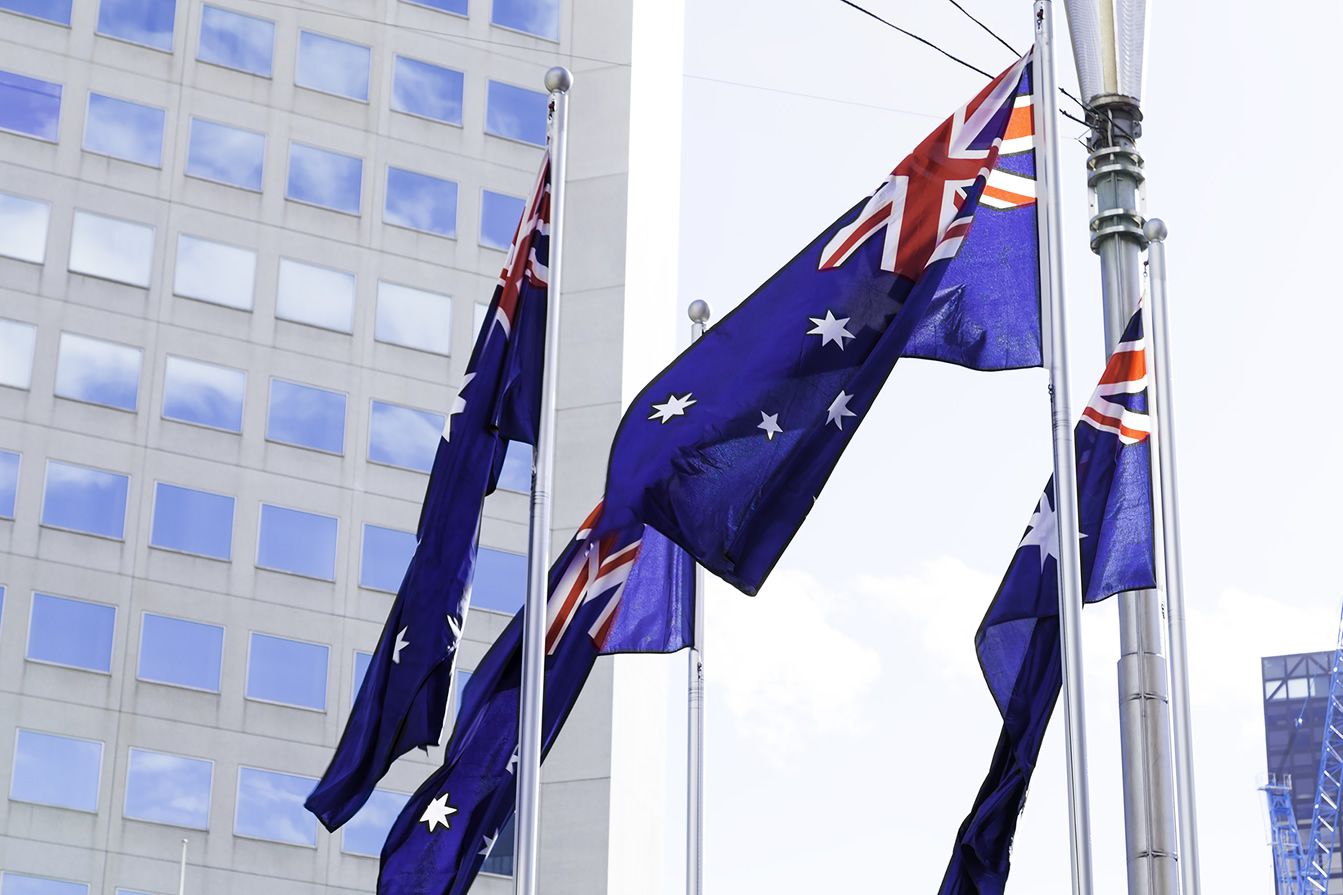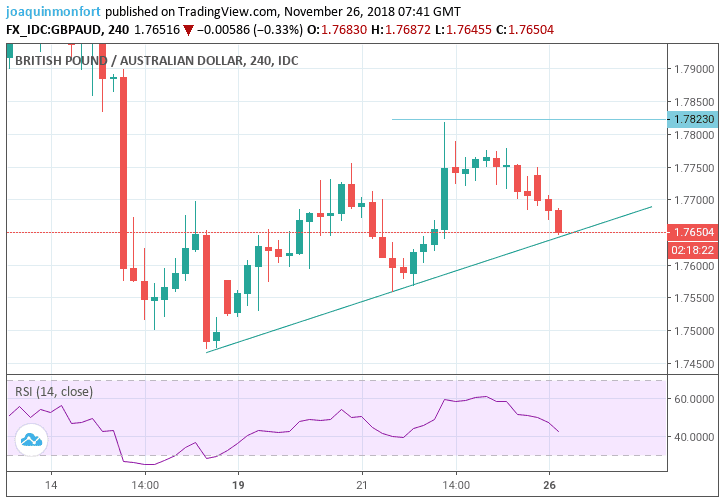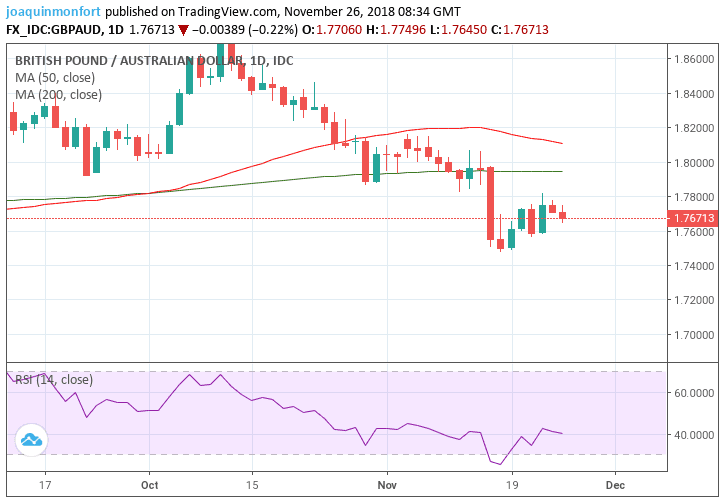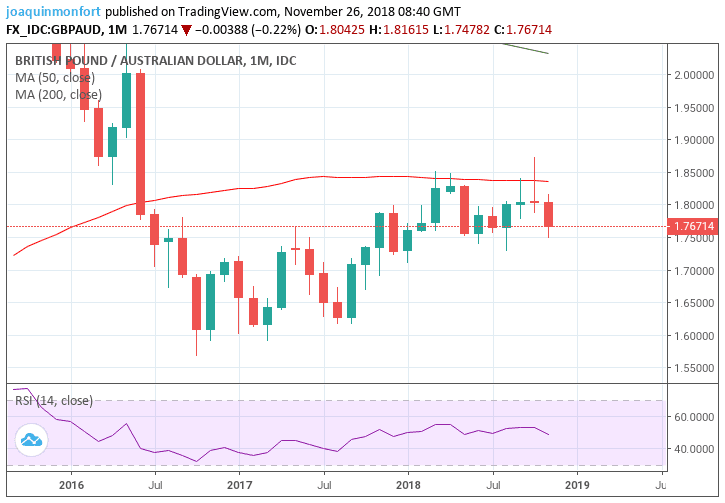Pound-to-Australian Dollar Rate in the Week Ahead: Infant Uptrend Looking Fragile

Image © Filipe Frazao, Adobe Stock
- Short-term trend arguably bullish
- But bearish activity at start of week suggests caution
- Brexit shenanigans dominate Pound; Aussie eyes geopolitics
The Pound slipped againt the Australia at the start of the new week, with 1 GBP buying 1.7650 AUD on the inter-bank markets making it 0.30% weaker than where it started the week's account.
The GBP/AUD decline might take some observers by surprise given the news over the weekend that the UK and EU had finally agreed terms of a withdrawal agreement, progress that would typically be expected to strengthen the Pound.
The reason for the continued weakness is probably that much uncertainty remains as so many MPs in the UK's Parliament remain opposed to the agreement and it is currently not expected to pass into legislation.
This leaves open the possibility of another general election, the UK joining the European Economic Area or even a second referendum, ensuring the deal actually spawns yet more and not less uncertainty in its wake.
The technical outlook facing GBP/AUD is a little more complex than we would like, and made all the more so by this morning's decline. The pair had been showing signs it was beginning a new short-term uptrend after unfolding a new set of peaks and troughs higher on the 4 hr chart.
The infant uptrend is now under threat after this morning's sell-off and if the exchange rate breaks below the trendline from the November 18 lows - on a closing basis - it could signal the downtrend is resuming, with the next target at the 1.7480 lows.
As things stand, however, the short-term trend is still, on balance, just about bullish yet even here there are problems.The way higher is barred by the formidable obstacle presented by the 50-week MA at 1.7844 only marginally above the 1.7823 highs. So even if the pair manages to break above the 1.7823 highs it could quickly encounter fresh resistance.
Even if it manages to establish a foothold above the 50-week, the 200-day MA lies not much higher at 1.7946, and will assuredly present a further barrier to upside progress.
Therefore, ultimately it is only when both these hurdles are surpassed that we would be confident in forecasting an extension of the extremely young uptrend higher.
Assuming a break above 1.8000 - or above the 200-day on a closing basis - we would forecast a continuation up to 1.8200.
Momentum is bullish on the daily chart, as it seems to be showing a possible bottoming pattern forming - an inverse head and shoulders perhaps - and this is a constructive sign. If momentum rises it usually signals a similar rise in the exchange rate.
Just to complicate matters further, however, the monthly chart is showing the formation of a bearish 'gravestone doji’ in October. If the current month also ends on a bearish note it will reinforce the signal given by the bearish candlestick pattern in October and suggest more downside on the horizon.
Advertisement
Bank-beating GBP/AUD exchange rates and risk management products: Get up to 5% more foreign exchange by using a specialist provider to get closer to the real market rate and avoid the gaping spreads charged by your bank when providing currency. Learn more here
The Australian Dollar: What to Watch
Probably the most important factor for the Australian Dollar in the week ahead is investor risk appetite. The geopolitical risk of an outbreak of enmities between Russia and Ukraine is a risk factor but of even more consequence arguably is the meeting of the G20, beginning on Thursday, November 29.
The main focus of the meeting will be on whether trade tensions escalate between China and the US. Despite both president's Trump and Xi saying they are open to talks, recent comments from China after the Asian-Pacific trade conference suggested the two sides are even further apart than previously thought.
If relations worsen the Aussie will weaken as it is tethered to China outcomes given their close trade links. On the other hand any suggestion of an easing in relations would help the AUD.
One major consideration is whether the US decides to go ahead and implement a 25% tariff on the $250bn of Chinese imports it already tariffs at 10%. This is set to automatically happen on the 1st of January 2019. If these higher duties go ahead they will almost certainly weigh on the outlook for the Aussie.
On the hard data front the week has some interesting releases related to consumer credit and the housing market, which could be of interest to Aussie-watchers.
Both these factors are a major consideration for the Reserve Bank of Australia (RBA). The high indebtedness of Australians has kept interest rates low. The unbalanced housing market has also been a factor impacting on policy although the RBA eventually brought in specific measures aimed at targeting responsible mortgage lending after fears the metropolitan market was overheating.
Private Sector Credit is out on Friday at 01.30 GMT and is forecast to show a 0.4% rise in October. Compared to the previous month.
New Home Sales in October is out at 1.00 on Thursday but we do not have analysts estimates for these.
This morning deputy governor of the RBA Kent spoke about housing but said little about the broader economy or monetary policy. He said demand for home loans had “weakened” and supply “tightened”.
He also mentioned the growth in non-bank or shadow bank lending, especially to investors, A trend the RBA was monitoring for signs if financial stability risks.
Advertisement
Bank-beating GBP/AUD exchange rates and risk management products: Get up to 5% more foreign exchange by using a specialist provider to get closer to the real market rate and avoid the gaping spreads charged by your bank when providing currency. Learn more here







